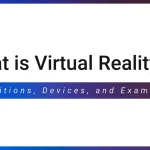
Let’s be honest. For decades, the corporate world has operated on a pretty narrow definition of a “good” employee. Think: outgoing, a natural networker, quick with a comeback in meetings. It’s like we’ve been trying to build a symphony orchestra but only hiring people who play the trumpet.
Well, it’s time to expand the repertoire. Neurodiversity—the idea that variations like autism, ADHD, dyslexia, and others are natural, valuable parts of human diversity—isn’t just a buzzword. It’s a paradigm shift. And for modern workplace management, it’s the key to unlocking a wellspring of untapped talent, innovation, and perspective. The goal isn’t just to hire neurodivergent individuals. It’s to create an environment where they can truly thrive. So, how do we move from theory to practice? Let’s dive in.
Rethinking the Hiring Playbook
Traditional hiring processes are, frankly, a minefield for many neurodivergent candidates. The grueling, socially-intensive group interviews. The vague questions like “Tell me about yourself.” The unspoken rules of eye contact and body language. These aren’t measures of competence; they’re tests of social conformity.
Practical Shifts for a More Inclusive Recruitment Strategy
Here’s the deal. You don’t need to scrap your entire process. Small, intentional changes can make a world of difference.
- Provide Questions in Advance: Send the interview questions to the candidate a day or two beforehand. This reduces anxiety and allows them to showcase their considered thoughts, not just their on-the-spot performance skills.
- Focus on Skills, Not Style: Incorporate work samples or a small, paid trial project. Let the work speak for itself, rather than the candidate’s ability to sell themselves in a high-pressure chat.
- Clarify and Be Specific: Avoid open-ended or abstract questions. Instead of “Where do you see yourself in five years?”, try “What kind of problems do you most enjoy solving?”
- Rethink the Panel: Large interview panels can be overwhelming. Consider sequential one-on-one interviews instead.
Crafting a Workspace That Works for Every Brain
Okay, so you’ve hired a neurodiverse team. Fantastic. But the real work begins on day one. Inclusion is an ongoing practice, not a one-off initiative. Think of it as gardening—you don’t just plant the seeds and walk away. You cultivate the soil, provide the right amount of water and sun, and pull the weeds.
Sensory and Environmental Tweaks
For many neurodivergent individuals, the standard open-plan office is a special kind of hell. The constant hum of conversation, the flickering fluorescent lights, the sudden phone ringing—it’s a sensory assault that can completely derail focus.
- Offer Flexibility: Provide noise-canceling headphones, and create designated quiet zones or focus rooms.
- Lighting Control: Where possible, allow for natural light or offer desk lamps as an alternative to harsh overhead lighting.
- Clear Communication Channels: Establish clear norms for communication. Is Slack for urgent messages? Is email for longer-form updates? Reducing ambiguity reduces stress.
Management and Communication Styles
This is where managers can make or break the experience. The key? Flexibility and clarity, always.
| Instead of This… | Try This… |
| “I need this soon.” | “I need this by 3 PM Thursday.” |
| “Just figure it out.” | “Here are the resources and my expectations. Let’s check in Tuesday.” |
| Surprise performance reviews | Regular, structured one-on-ones with a clear agenda. |
| Mandatory social events | Optional, low-pressure gatherings with a clear purpose and end time. |
Leveraging Neurodiversity for Innovation and Problem-Solving
This isn’t just about being fair. It’s a strategic advantage. A neurodiverse team brings a wider range of cognitive tools to the table. An autistic employee might spot a pattern in data that everyone else missed. A colleague with ADHD might hyperfocus and solve a complex problem in a burst of creative energy. A dyslexic thinker might excel at spatial reasoning and see the big picture when others are stuck in the weeds.
Honestly, in a world of complex challenges, you need a team that doesn’t all think the same way. You need that cognitive dissonance—the friction that sparks the fire of a truly brilliant idea.
The Heart of It All: Fostering a Culture of Psychological Safety
All these strategies hinge on one non-negotiable foundation: psychological safety. People need to feel safe to ask for what they need. To say, “The buzz from the fridge is distracting me,” or “I need written instructions for that,” or “I work better with cameras off during video calls.”
This starts with leadership. It means training managers not just on the what of neurodiversity, but on the how of empathetic leadership. It means creating employee resource groups (ERGs) where neurodivergent employees can find community and support. And it means viewing accommodations not as special treatment, but as the standard practice of removing unnecessary barriers—the same way you’d install a ramp for someone who uses a wheelchair.
It’s about building a workplace where everyone feels they can bring their whole, authentic self to work. Not just the part that fits the old, outdated mold.
A Final Thought
Embracing neurodiversity in the workplace isn’t a charity project or a box-ticking exercise. It’s a fundamental re-imagining of what talent looks like and how we nurture it. It’s an acknowledgment that the human brain is not a monolith, and that our greatest strength lies in our collective, brilliant differences.
The future of work isn’t about finding the perfect candidate who fits a dusty old job description. It’s about building a dynamic, adaptable environment where the right candidate can reveal themselves—and then truly shine.







